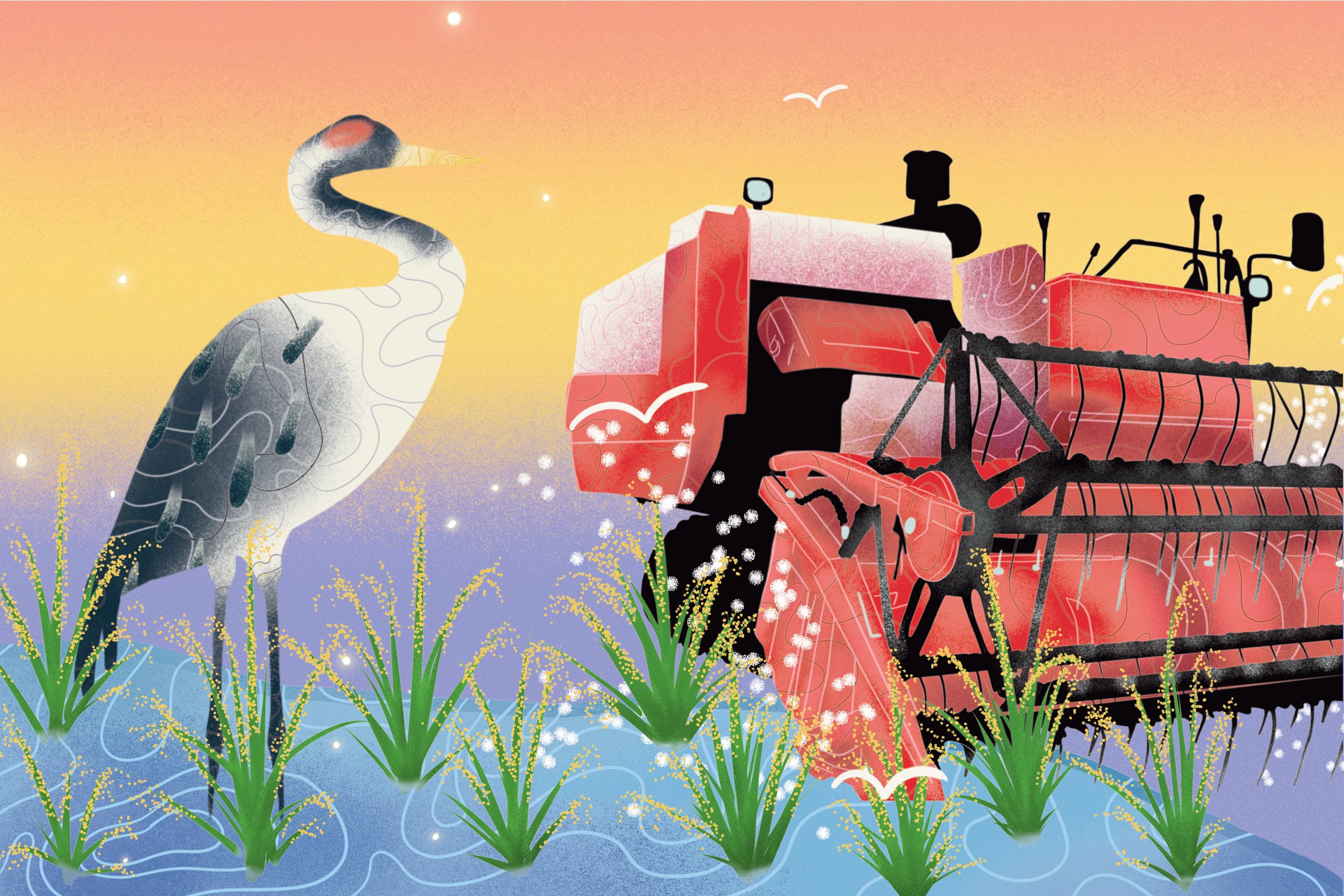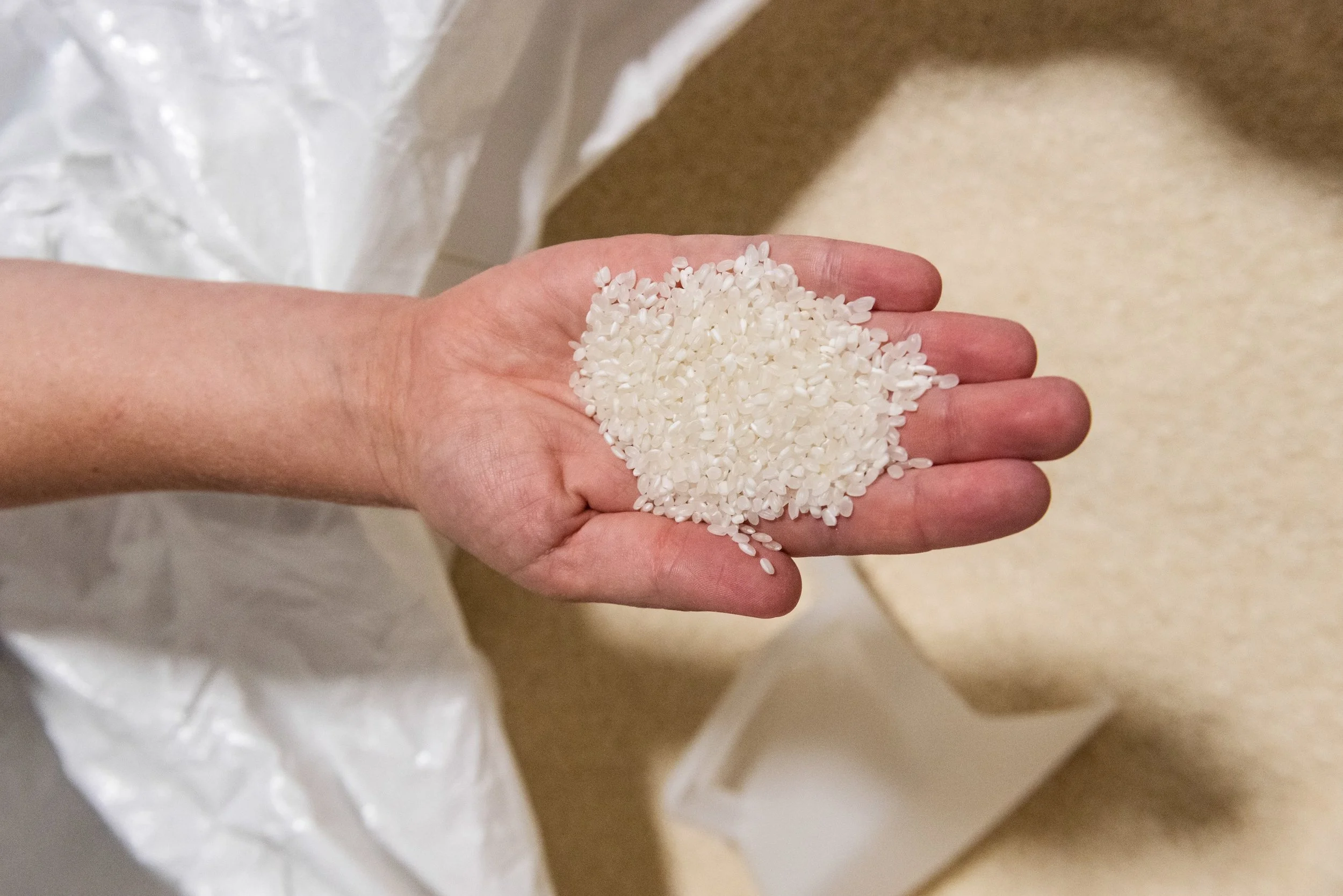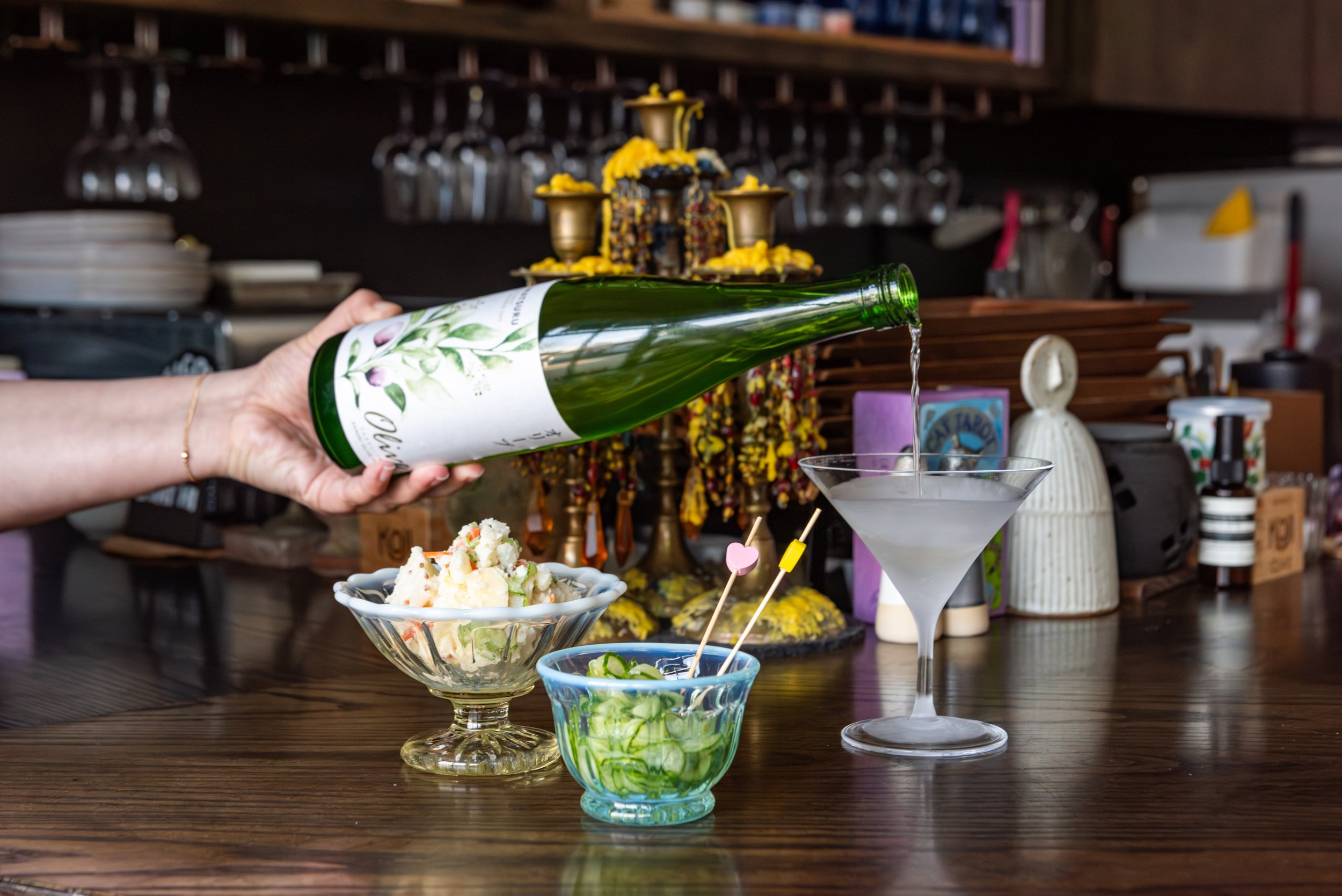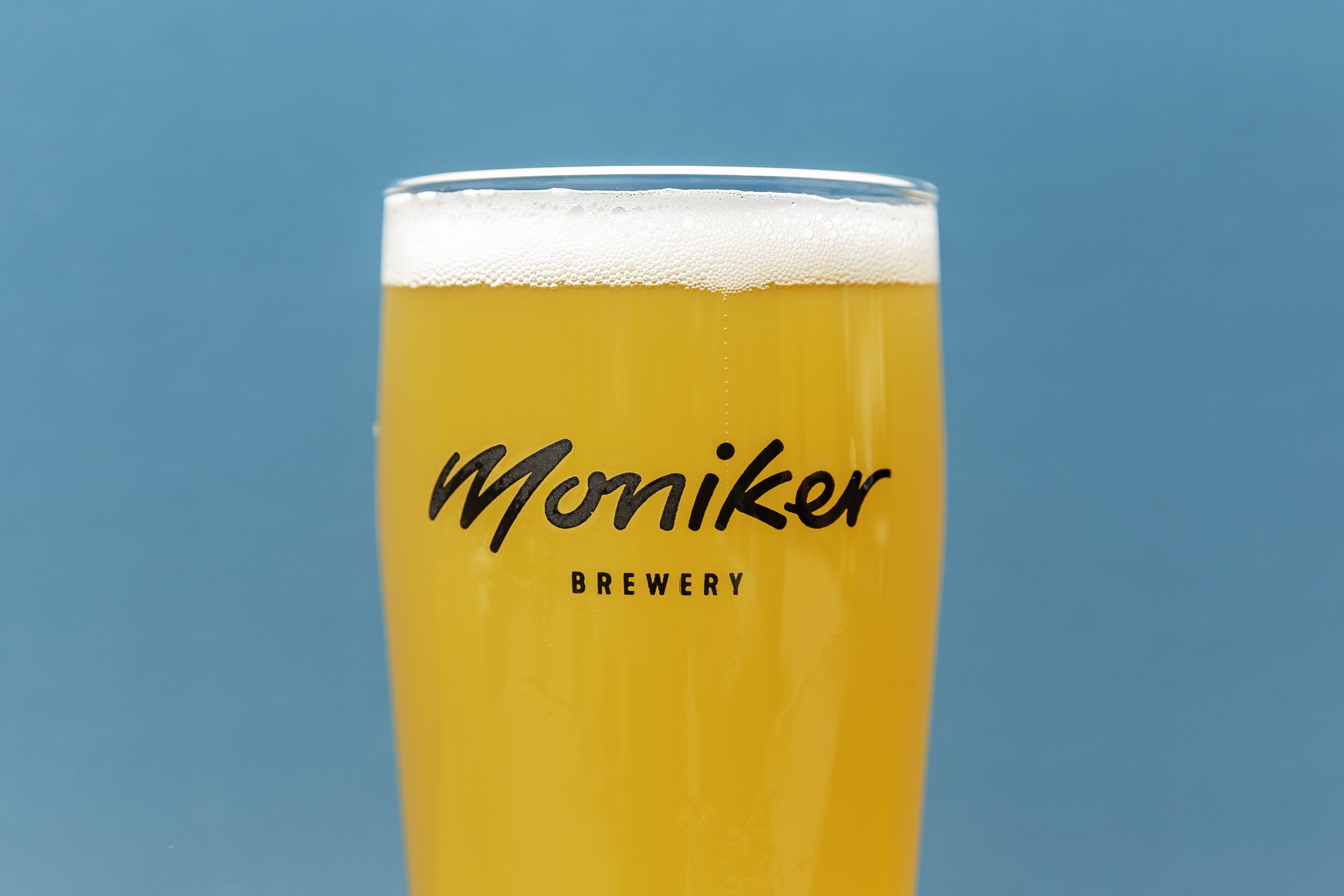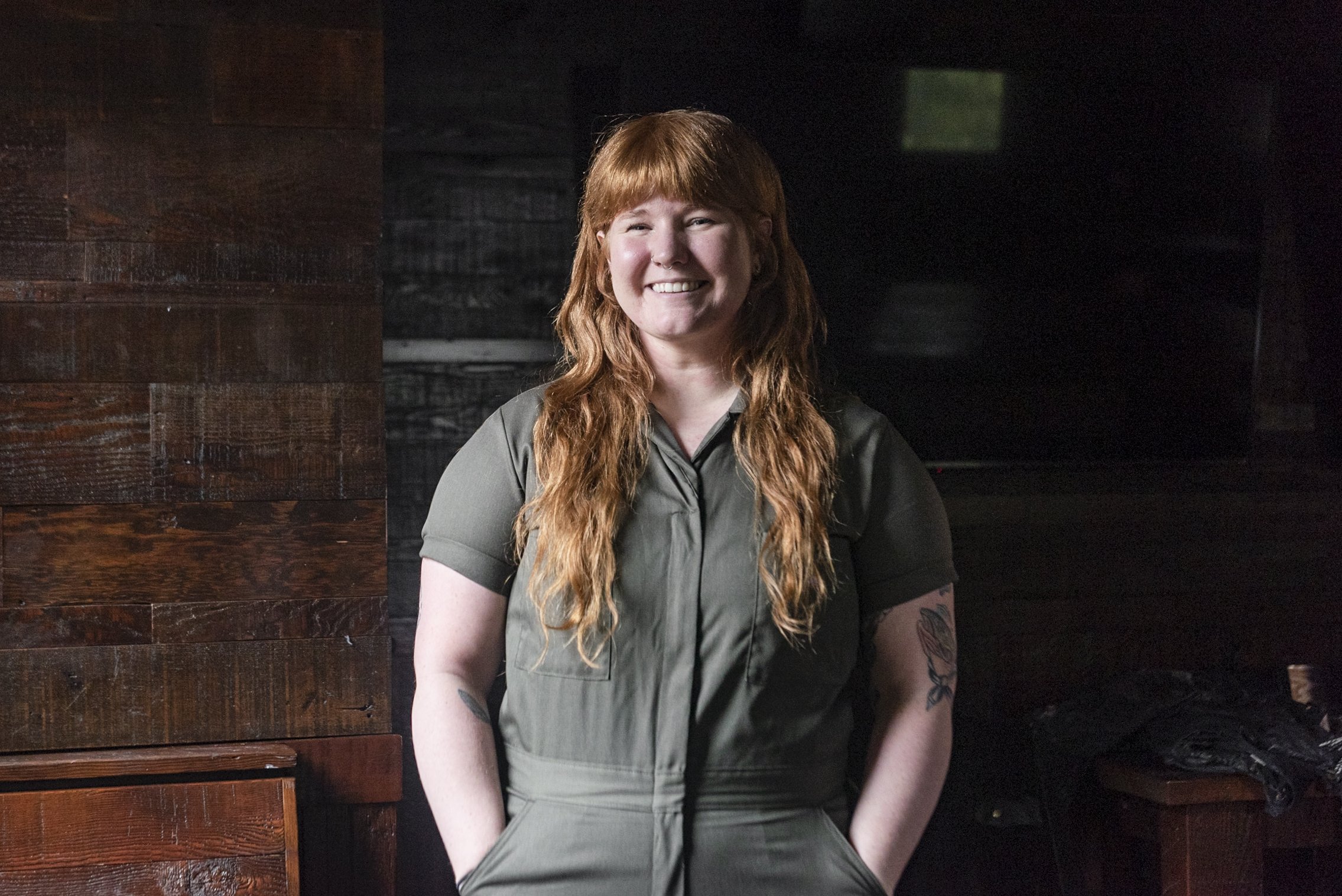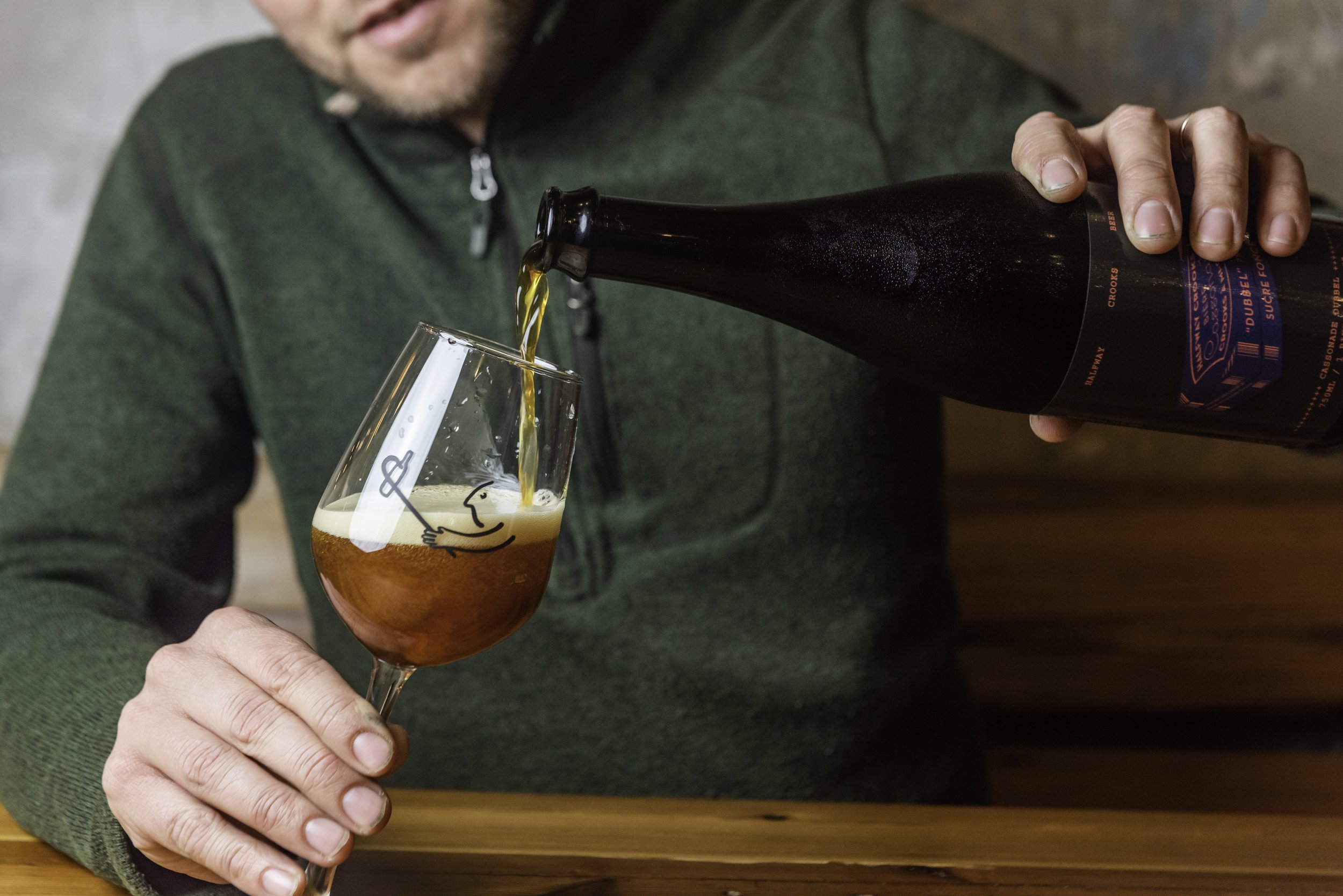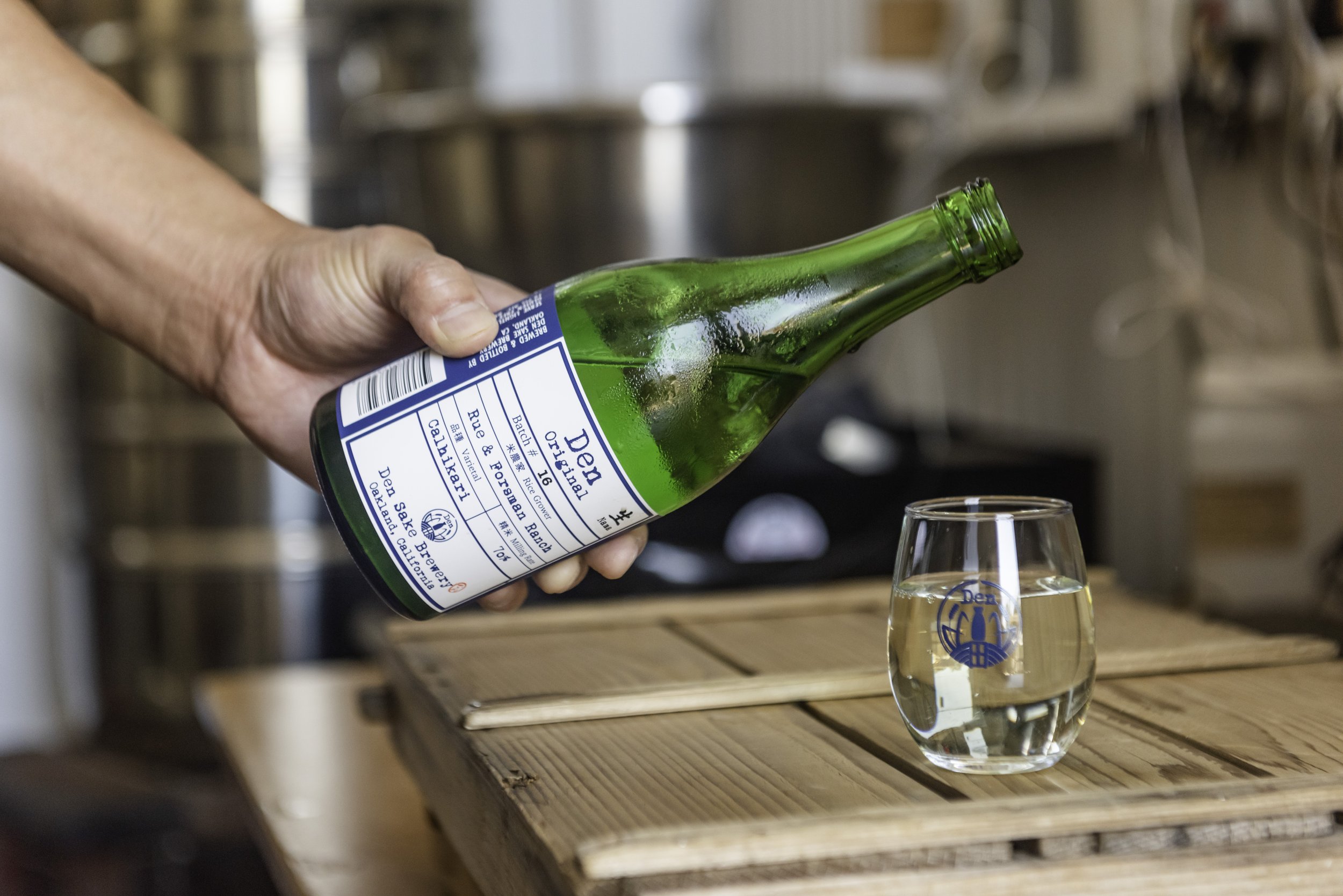A 7,000-Pound Bet: The Story of Wetlands Sake
Brewers Lindsey Brower Beard and Nan Wallis of Wetlands Sake in New Orleans are putting true Louisiana terroir into the can while working to protect and preserve the wetlands ecosystem.
illustration: bashel lubarsky
Despite Louisiana being the third largest producer of rice in the country, until 2020, there were no sake breweries to be found. But although New Orleanians were generally less familiar with sake, launching a local sake brewery just made sense to entrepreneurs Lindsey Brower Beard and Nan Wallis. “With Louisiana being the land of rice, this was the perfect place to start [making] sake,” says Wallis.
So Brower Beard and Wallis founded Wetlands Sake in 2018, but that was just step one. “It has been a little bit like rolling a boulder up Mt. Everest,” says Wallis. From finding the right rice, to COVID-19 shutdowns, and Hurricane Ida, plus the logistics of opening the city’s first sake brewery, nothing was easy. But Wetlands Sake is still standing, now with a full-scale brewery and taproom: brewing, growing, and spreading their love of sake across the state.
Photos: Will Blunt
Finding the Rice
“From the beginning, we were committed to using Louisiana rice or we didn’t want to start the brewery,” says Wallis. “If there would be sake, it had to be local. That was our commitment.” This exploration of terroir differentiates Wetlands from many other nano-sake breweries around the country, but more to the point, it supports the Louisiana economy and agriculture.
Brower Beard and Wallis went to Louisiana State University AgCenter’s H. Rouse Caffey Rice Research Station in Crowley, certain they’d find the perfect variety. They explained to the former director, Dustin Harrell, that they needed a rice that was high in starch, low in protein, and low in iron and minerals. “We asked what to use,” says Wallis. “He goes, ‘There is none.’” Louisiana grows mostly long- and medium-grain rice, primarily used for cooking and eating. What they needed was short-grain rice, and even if Brower Beard and Wallis found the right seed, they were told that it’d be a seven-year process to grow, harvest, plant more, and accumulate enough rice for production.
But several months later, Wallis got a call from Harrell—he had the perfect rice. Steve Linscombe, a now-retired rice breeder at LSU, developed a short-grain strain in 2003 that had been sitting in storage, all but forgotten. Even more fortuitous: the rice was named Pirogue after the flat-bottomed boat ideal for traversing Louisiana’s shallow marshes, falling right in line with the “Wetlands” brand.
In order to test whether or not the rice would work for sake, Brower Beard and Wallis only needed two pounds, but the Rice Research Station would only grow a minimum of 7,000 pounds (one acre total). “I talked with Lindsey, and we committed to [growing] 7,000 pounds,” says Wallis. “We’d work on a business plan in the meantime. If it worked, great. If it didn’t…”
“We had no other option,” says Brower Beard.
When the results finally came back, they found that the Pirogue varietal was very similar to the best-quality sake rice used in Japan. “We were elated,” says Wallis. “That was luck. Happenstance.”
Now, the LSU Research Station grows approximately 230,000 pounds of Pirogue rice over 30 acres each year. At this rate, Wetlands Sake will eventually outgrow the land provided by LSU. “That doesn’t mean we need to leave Louisiana,” says Wallis. “That means we need to go to other farmers in Crowley.” Long-term, the research station is also working to mill the rice in-state. “Using our own rice is not the easy way to go about it. There are a lot of extra steps that make it more challenging along the way.” But, Brower Beard and Wallis firmly believe that developing a product that is truly Louisianan is worth the challenge.
Unfiltered, CanneD Nigori Sake, Wetlands Sake, New Orleans, L.A.
brewers LINDSEY BROWER BEARD AND NAN WALLIS of wetlands sake
Building Sustainability
It took months for Brower Beard and Wallis to find a space for the brewery and taproom. Most warehouses were dominated by Mardi Gras prop companies, and on top of that, they had to face a lack of accessibility for sake-making equipment. “You can’t just order a sake tank like you can a beer tank,” says Brower Beard.
Just as they were starting the building process, the COVID-19 pandemic began to spread. “We had to keep going forward,” adds Wallis. “We already leased the space and bought the equipment.” They were finally able to can their sake in November of 2020, right before the second wave shut New Orleans down. “From November 2020 to March 2021, we were sitting on product,” says Brower Beard. “We were still brewing because we had a team of people being paid. We kept people working.”
Rather than continuing the taproom build-out, they spent money on production. “We decided in August to pick out materials, and Ida hits,” says Wallis. Finding anything—lights, tables, bar equipment, contractors—was impossible. Once the taproom was ready for their opening night in February of 2022, it was delayed due to a big storm. “When the storm happened, it felt like we would never survive this,” says Brower Beard. But the following Tuesday, more than 700 people showed up. “We had live music, everyone drank sake, brought food. That was the uplifting moment we needed.”
The perseverance necessary to open in these conditions (the same struggles everyone in the New Orleans hospitality industry faces, Brower Beard and Wallis are quick to point out) spills over to their overall mission: the conservation of America’s wetlands.
“We both grew up here and had the benefit of enjoying the wetlands recreationally,” says Wallis. But as they worked with the research station, they learned more about the wetlands’ role in cultivating rice, in addition to protecting against erosion, purifying water, and providing ecosystems to the wildlife and fauna. Protecting America’s wetlands became their calling—it was why they chose it as their namesake. Two percent of the brewery’s profits benefit the conservation of America’s wetlands. The brewery is also committed to producing as little waste as possible, repurposing their byproducts. The kasu, for instance, gets sent to a local farmer to feed his heifers. “His butcher says his meat is the most tender he’s ever butchered,” says Wallis.
Using cans instead of glass bottles was a sustainability choice too, as they’re the most recycled beverage container in the world and they are eco-friendly. Additionally, the cans are more portable and they protect drinks from light, extending the sake’s shelf-life to well over a year.
Blood Orange Sparkling Sake, Junmai Sake with Sparkling Water and Blood Orange Extract, Wetlands Sake, New Orleans
Filtered, Canned Sake, Wetlands Sake, New Orleans
Spreading the Love
Making a Louisianan sake is one thing; sharing it with a broader audience is another. The language on their cans is as straightforward as possible. “There are a lot of times when we’ll get a bottle, and even after reading the description, knowing the brewery, the sugar, and acid, we still don’t know what it’ll taste like,” says Wallis. “You shouldn’t need a sake master’s degree to determine if you'll like it.” As a result, they’re appealing to a wide range of drinkers, many of which have never had sake before. “We thought it’d be millennials, maybe older professionals. We’ve found it really spans all age groups.”
“The exciting part is how well it’s being received,” adds Brower Beard. Chefs across the city pair Wetlands Sake with their menus or use it as an ingredient—think unfiltered sake in pizza sauce—further expanding Wetland Sake’s audience. The taproom features nine rotating sakes and sake cocktails. “It allows us to keep the taproom interesting. You can try a variety of cocktails side-by-side; some sweet, some savory, some traditional, some sparkling.”
Now, Wetlands Sake is one of the largest-scale operations in the American craft sake market. “We really believe there is going to be a moment for sake,” says Wallis. “It’s started already and it’s projected to grow over the next 10 years at a rapid rate.” And Brower Beard and Wallis are huge contributors to that movement. Not only is Wetlands a true, honest portrayal of New Orleans terroir, but it’s also an entryway to the beautiful, intricate world of sake.

